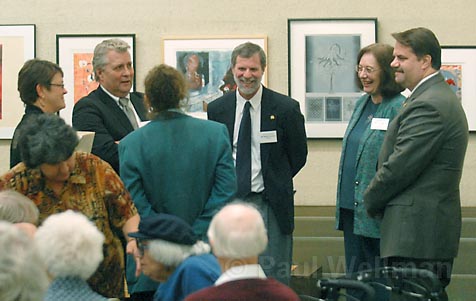Sheriffs Train in ‘Restorative Justice’
Justice Without Jail

Nine deputies with the Santa Barbara County Sheriff’s Department underwent four days of intensive training in “restorative justice,” an alternative to the traditional “catch ’em, bail ’em, and jail ’em” approach to criminal justice. The training-led by New Zealander Allan MacRae-focused on techniques that bring juvenile offenders and their families together with the victims of the offenders’ crimes, forcefully acquainting juvenile defendants with the human impact of their actions, in hopes that they will not offend again. The theory behind getting relatives involved is that family members can do a much better job keeping the offenders out of trouble than could overworked probation officers. And they can help the defendants make restitution. MacRae said many people initially confuse this approach with “some kind of softer, Kumbaya version” of juvenile justice. “It’s actually a lot tougher and harder, but for a shorter period of time,” he said. And, he said, it’s achieved solid results in New Zealand.
MacRae said New Zealand used to have one of the highest rates of juvenile incarceration in the world before the techniques associated with restorative justice were introduced in the 1980s. By diverting youthful offenders to the family councils-which include police and prosecutorial representatives-MacRae said New Zealand has been able to shut down 18 juvenile institutions. He added that juvenile courts that once dispensed assembly-line justice five days a week-during which judges saw defendants for five to 10 minutes each-are now open only a few hours a week. MacRae said in some cities, 66 percent of the offenders successfully completed the programs; in others, he said the success rate was as high as 95 percent. Because of this, he said the juvenile crime rate is way down in New Zealand and fluctuates according to population growth. MacRae said youthful offenders are diverted from traditional court systems into the family conferences, where involved parties hammer out a detailed contract that spells out what kind of restitution is required, what kind of conduct will be limited, and possible jail time. If the offenders uphold the terms of their contract, the charges against them are dropped or reduced. Those who don’t live up to their contracts are dispatched back to traditional courts.
The appeal such a diversionary program might have for Santa Barbara is obvious. With jail overcrowding a chronic crisis-and a statewide recidivism rate of about 75 percent-Sheriff Bill Brown is looking for ways to prevent youthful offenders from “graduating” to adult crimes that land them in county jail. Some in law enforcement worry that the New Zealand model might prove too expensive for the county to pursue, but MacRae claims the savings over time have more than paid for the program. Members of Brown’s Blue Ribbon Task Force looking at jail overcrowding have been struck by how many people behind county bars are there due to gang activity. Gang activity is clearly on the rise, and law enforcement officials estimate that there are 3,000 known gang members in Santa Maria alone, compared to approximately 500 in the South Coast area.
MacRae said the traditional approach to gang members has proven counterproductive. He said many juveniles put behind bars find themselves forced to affiliate with gangs just to survive. A good way to reduce gang memberships, he said, is by keeping juveniles out of custody. The nine deputies participating in MacRae’s training sessions last week are assigned to the various high schools throughout the county. Additionally, there were 24 other participants, including county probation officers, drug and mental health workers, UCSB housing officials, youth counselors, and a handful of nonprofit employees interested in alternative criminal justice strategies.
Thus far, North County judges have clearly taken the lead in pushing for a new approach, most notably judges Jim Herman and Rogelio Flores. But Herman took his message to the South Coast last week, participating in a panel discussion on restorative justice sponsored by the American Civil Liberties Union.



